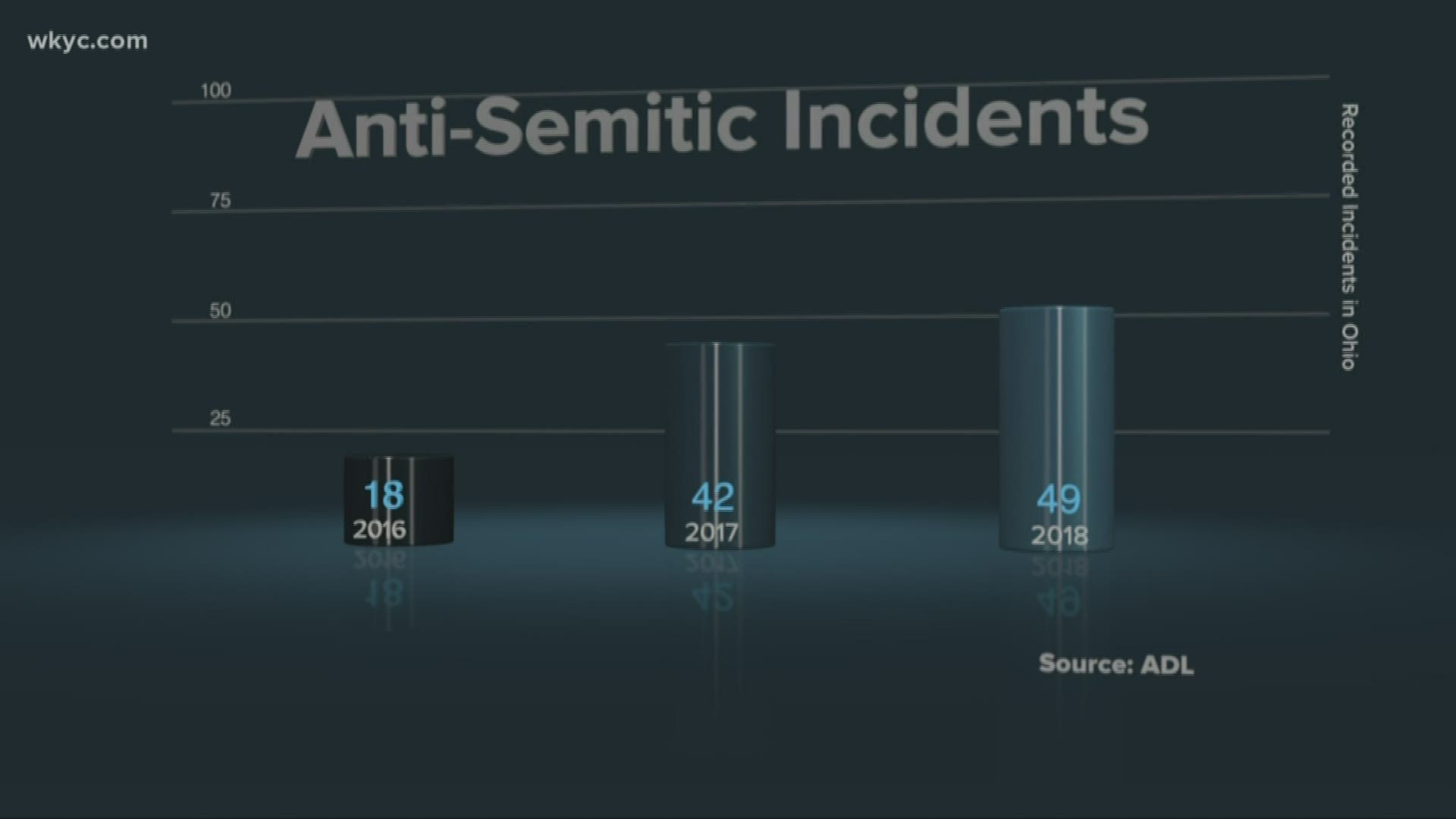CLEVELAND — Amid eruptions of anti-Semitic attacks in New York City, 3News investigator Rachel Polansky set out to track the number of hate crimes taking place in Northeast Ohio.
Anti-Semitism comes in many forms
“We heard what sounded like Jew, Jew, Jew. And then, it got louder and more vicious like Jew, Jew,” said Rachel Uram, of Moreland Hills.
Anti-Semitism often starts with hateful rhetoric, like Rachel Uram experienced.
“He did the Heil Hitler salute,” said Uram.
Anti-Semitism includes the spreading of propaganda, like this flier that was posted at the Maltz Museum of Jewish Heritage in Beachwood in July, 2019.

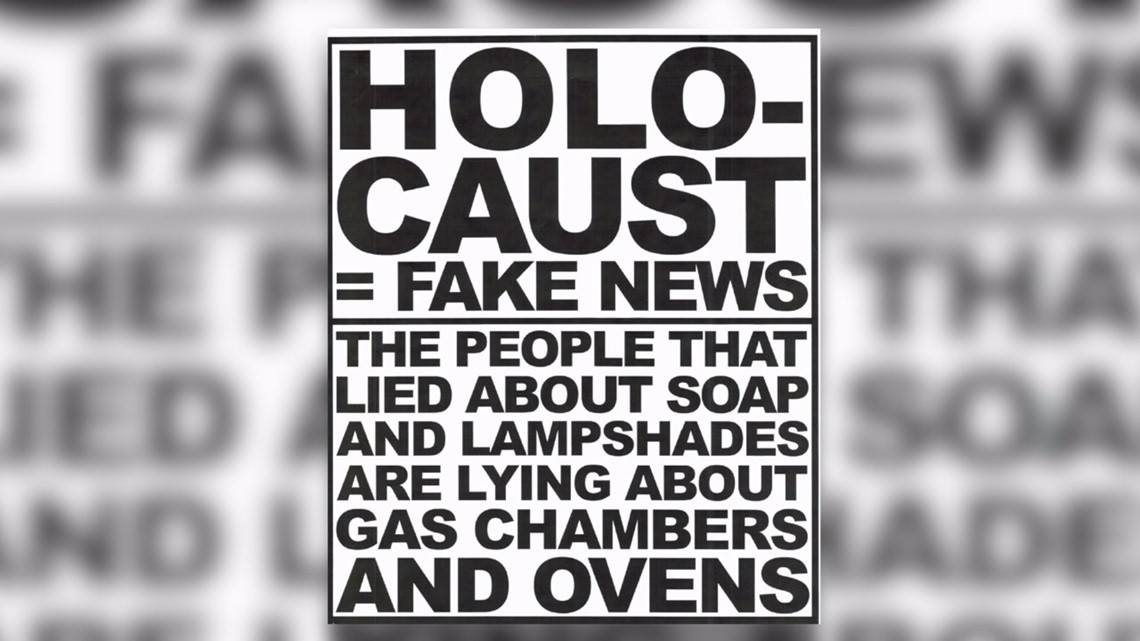
“There was a flier denying the Holocaust,” said David Schafer, managing director, Maltz Museum of Jewish Heritage.
Schafer says it's important to remember that the Holocaust didn’t start with the gas chambers.
"It started with words. It followed with ridicule and dehumanization which led to it," said Schafer.
Anti-Semitism can turn into action, like vandalizing the Agudath B'nai Israel Synagogue in Lorain in March, 2017.

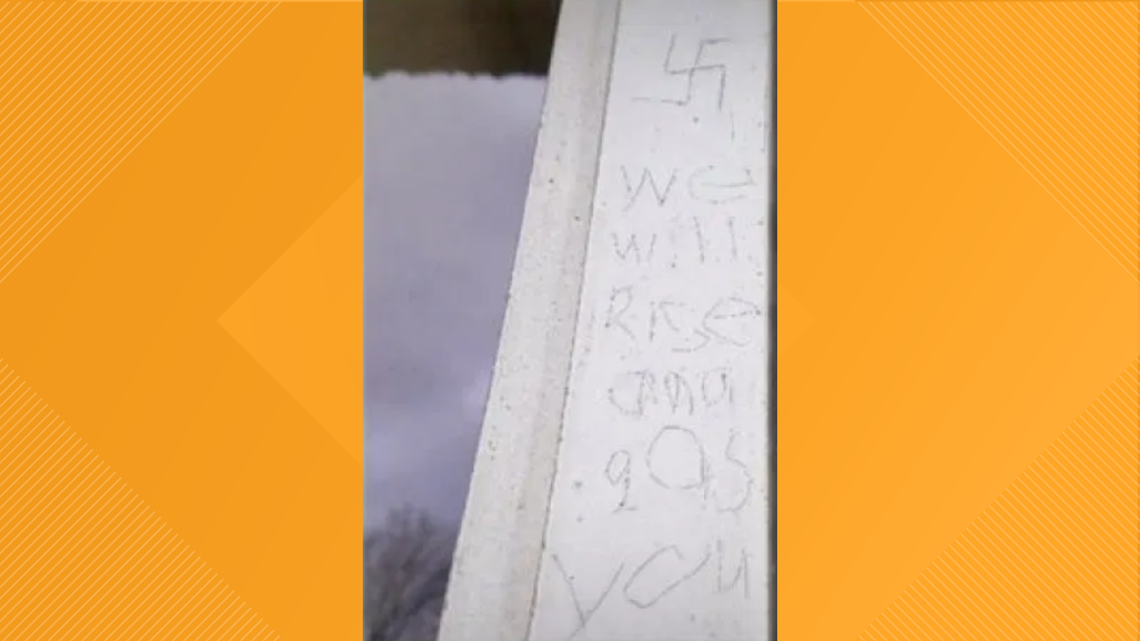
“Someone noticed on our backdoor that someone had etched in a swastika,” said Arnie Milner, President, Agudath B'nai Israel Synagogue.
Anti-Semitism can eventually turn into murder, like killing 11 people at the Tree of Life Synagogue in Pittsburgh.

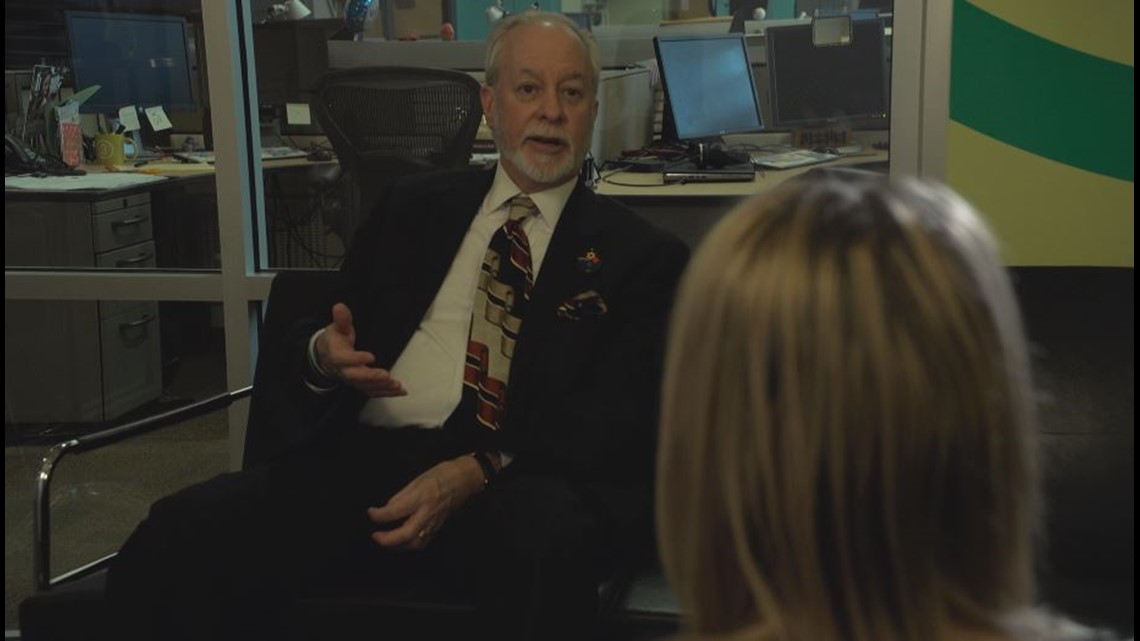
“You were in the Tree of Life Synagogue when that gunman opened fire. What was that like for you?” Rachel Polansky asked Rabbi Jeffrey Myers.
“Surreal, as though is this really happening?” said Rabbi Jeffrey Myers, of Tree of Life Synagogue. “Until you experience it, there’s nothing you can compare it too.”
The mass shooting at Tree of Life was the single worst attack on American Jews.
In many ways, Rabbi Myers became the face of the tragedy.
He appeared again and again in public in the following days, willingly giving interviews to reporters and news stations. When Polansky asked him why he thinks it's so important to continue talking about what happened, he said it's because silence is the biggest enemy.
“Because when we're silent, these acts just continue,” said Rabbi Myers.
Anti-Semitism in Northeast Ohio
3News wanted to know: Is anti-Semitism on the rise in Ohio?
We requested incident reports from local police. Most had none. We were told that investigators did not typically mark incidents as hate crimes. For example, a spray-painted swastika might be classified as vandalism, not as a hate crime.
James Pasch is regional director for the Anti-Defamation League (ADL), a Jewish non-profit that specifically tracks anti-Semitic incidents. In Ohio, the ADL recorded a steady increase from 18 anti-Semitic incidents in 2016, to 42 incidents in 2017, to 49 incidents in 2018.

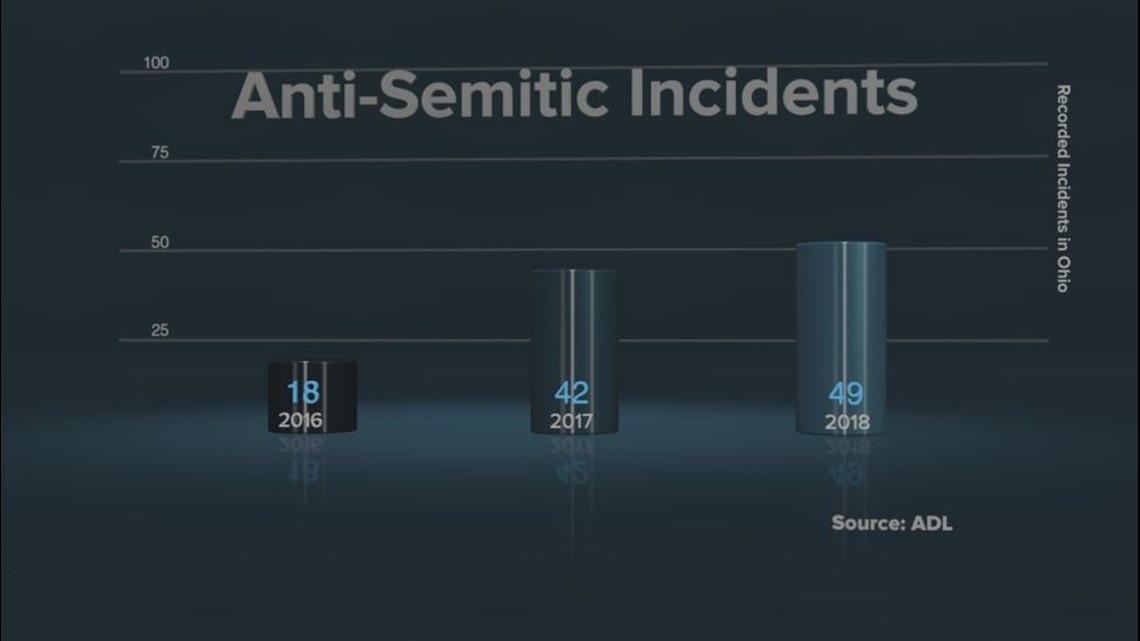
“We are seeing statistically on the ground what we are feeling in the environment, a spike in anti-Semitic behavior, attitude and incidents,” said James Pasch, Regional Director, anti-Defamation League (ADL).
The FBI also tracks hate crime data but 3News found their numbers don't match those of the ADL.
An FBI spokesperson said it's because they collect data differently.
Pasch has his own theory about the discrepancy.
“Under-reporting is happening on multiple levels. It's happening because cities aren't turning over information. It's also happening because people aren't always reporting hate crimes,” said Pasch.
Police do not have to report hate crimes to the FBI and 3News found that many don't.
92 cities with populations of 100,000 people or more reported zero hate crimes or didn't report at all.
“The FBI can only gather what is sent to them,” said Pasch.
Meanwhile – a recent survey conducted by the American Jewish Committee (AJC) of 1,200 American Jews found eight of every ten (84%) believe anti-Semitism has increased.

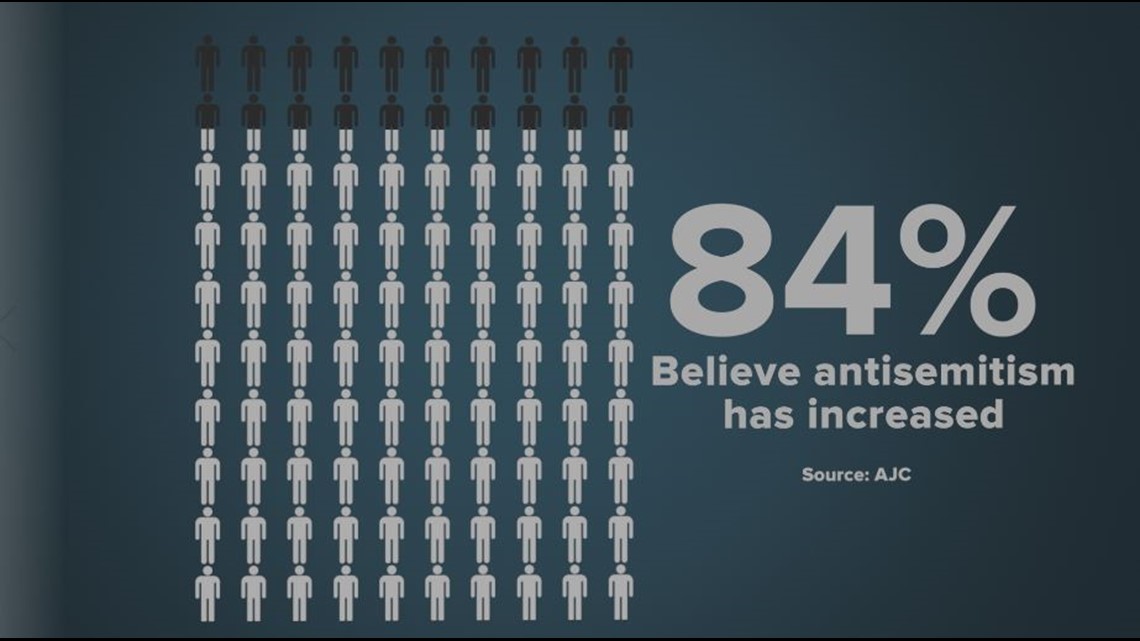
One of three (31%) say they have avoided displaying their Jewish identity.


“I was hesitant at first to put the menorah in the window because I don't live in an area of high concentration Jewish populations,” said Josh Kramer, Ohio City.
Josh Kramer who lives in Ohio City says that almost happened to him this past Chanukah.
“It was that feeling of hesitancy that struck me,” said Kramer.
But it was that same hesitancy that made him all the more proud to place his menorah in his window -- and then get on a bus with other Clevelanders to march in New York City.

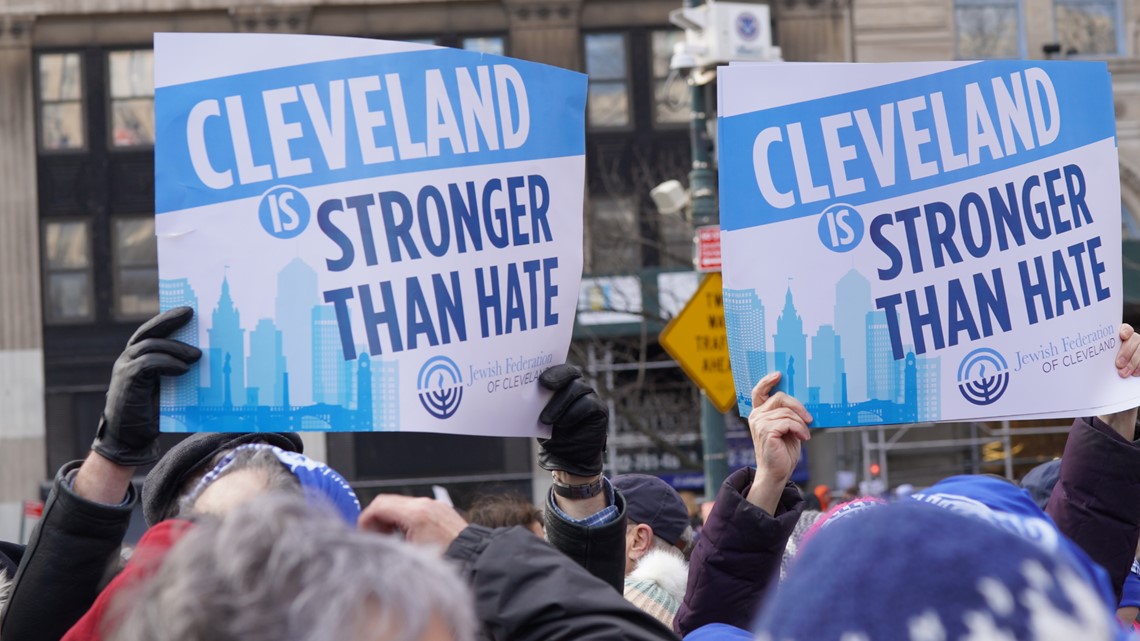
“We marched for no hate, no fear, to show our solidarity,” said Gregg Levine, Community Relations Committee, Jewish Federation of Cleveland. “We wanted to do something, we wanted to be involved and show that Cleveland cares.”

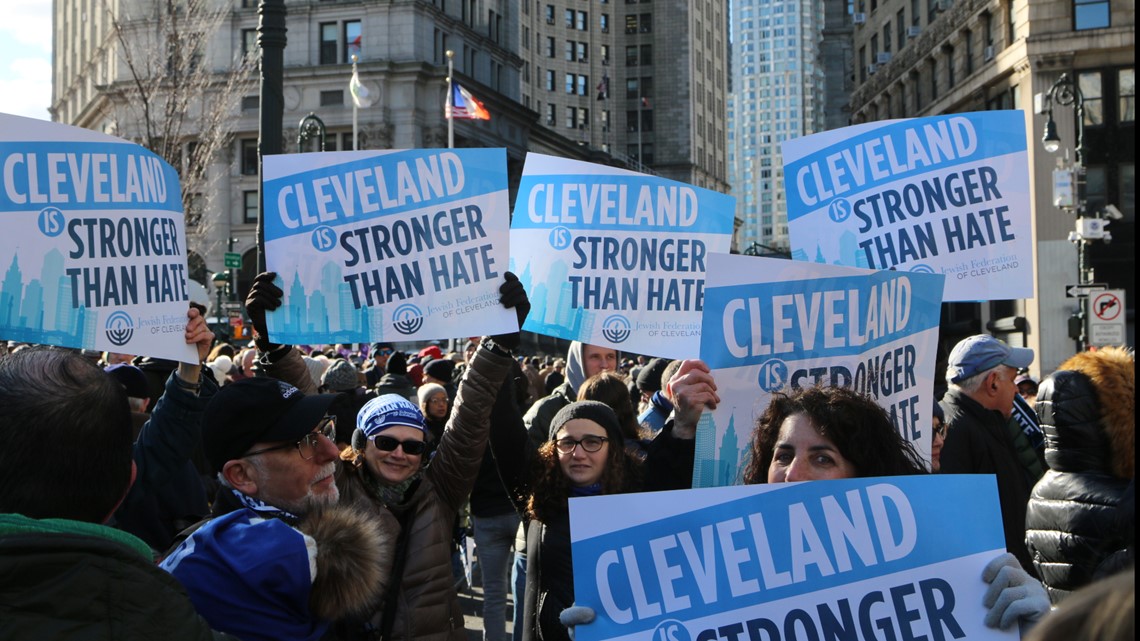
It was a dramatic display of cross-faith unity.
For a closer look at the anti-Semitic acts in Northeast Ohio, including what happened and who is responsible, see the interactive map below:

